How to Set Up Your Woodworking Shop with the Right Tools from the Start: A Complete Guide
How to Save Time and Money by Equipping Your Woodworking Shop with the Right Tools from the Start
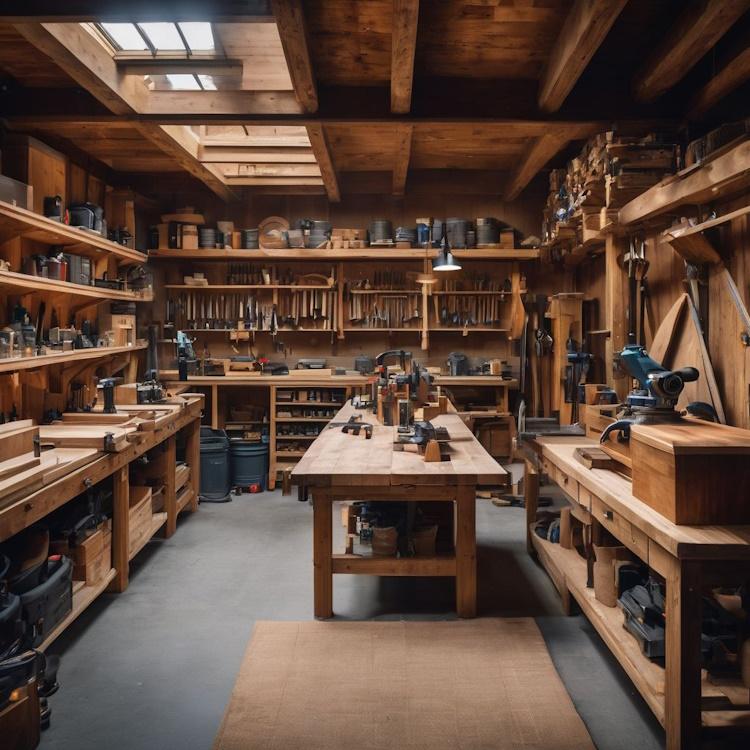
Getting ready to create a woodworking shop can be exciting. A woodworking shop is where you cut wood and make cool things. You want it to be set up like an expert’s from day one.
It’s important because learning how to use tools and space right will help you make better projects. Beginners need to know about cutting and finishing wood, which helps them pick the best tools.
Some tools are must-haves, like a tablesaw and miter saw. They let you cut wood in different ways for your projects. If your space is small, planning well matters a lot so everything fits nicely.
Experts also use drill presses and jointers to do more with their shops.
New skills mean using new tools for fancier projects as you get better at woodworking. An expert set up means knowing what each tool does and getting the right ones that last long.
We’ll look at how to put your shop together step by step so it works great for making things out of wood! Get ready; this guide will show you how to fill your shop with all the right stuff!
Key Takeaways
- Start by mapping out the shop layout and getting a dust collection system to keep the air clean.
- Get must-have tools like a table saw, bandsaw, orbital sander, jointer, planer, dust collector, miter saw, router, circular saw, and chisels.
- Buy good-quality tools that can do many jobs to save space and money.
- Use walls and go up high for storage so there’s more room to work in the shop.
- Make areas for each kind of job, like cutting or putting things together, to stay organized.
Choosing the Best Location and Layout for Your Woodworking Shop
When setting up your woodworking shop, it’s important to consider the size and layout of your space and select a dust collection system to keep the air clean. Both of these factors contribute to creating a safe and efficient workspace for all your woodworking projects.
Determining the size and layout of your shop
Picking the right size for your shop is a big deal. You need enough room to move around, work on projects, and store tools without feeling squished. Think about what you want to make.
Big things like furniture will need more space than small crafts. Look at where everything will go before you set up. A good layout lets you have a spot for each tool and material.
Use worksurface accessories to keep your shop flowing well. This means planning how you walk through the space so that it’s easy and safe when carrying wood or using tools. Keep your table saw in the center since it’s key for lots of projects.
Make sure there’s room around it to handle long boards comfortably. Set aside areas for cutting, sanding, finishing, and assembling – this keeps things organized and helps you work smarter!
Selecting a dust collection system
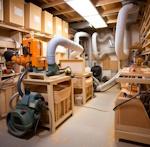 When setting up your woodworking shop, it’s important to consider selecting a dust collection system. A good dust collection system helps to keep your workspace clean and protects your health by minimizing the amount of sawdust and airborne particles.
When setting up your woodworking shop, it’s important to consider selecting a dust collection system. A good dust collection system helps to keep your workspace clean and protects your health by minimizing the amount of sawdust and airborne particles.
Look for a system with ample suction power and air filtration capabilities to effectively capture fine dust particles, ensuring a healthier environment in your workshop. Additionally, consider investing in accessories such as hoses, fittings, and attachments that are compatible with your tools to ensure efficient dust removal during woodworking activities.
Remember that proper maintenance of the dust collection system is crucial for its effectiveness. Regularly cleaning or replacing filters, emptying collection bags or bins, and inspecting hoses for clogs will help maintain the system’s optimal performance while promoting a clean working environment.
 Are you a woodworker with dreams of setting up a fully equipped workshop without breaking the bank? Say goodbye to the frustration of bad tools and costly mistakes with Ralph Chapman’s Ultimate Small Shop Guide. Drawing on over 20 years of woodworking experience, Chapman provides a step-by-step blueprint to help you create a functional workshop for under $1,000. Learn the secrets of tool selection, space optimization, and shop layouts, and discover a hidden source for quality tools at up to 70% off big-box retailer prices. Don’t let common pitfalls derail your woodworking journey—invest in the Ultimate Small Shop Guide and start crafting your projects with confidence today! Advertisement
Are you a woodworker with dreams of setting up a fully equipped workshop without breaking the bank? Say goodbye to the frustration of bad tools and costly mistakes with Ralph Chapman’s Ultimate Small Shop Guide. Drawing on over 20 years of woodworking experience, Chapman provides a step-by-step blueprint to help you create a functional workshop for under $1,000. Learn the secrets of tool selection, space optimization, and shop layouts, and discover a hidden source for quality tools at up to 70% off big-box retailer prices. Don’t let common pitfalls derail your woodworking journey—invest in the Ultimate Small Shop Guide and start crafting your projects with confidence today! AdvertisementHow to Select and Use the Most Important Woodworking Tools for Beginners
Equip your woodworking shop with essential tools like a table saw, bandsaw, orbital sander, jointer, planer, dust collector, miter saw, router, circular saw, and chisels to kickstart your projects.
These tools will set you up for success in tackling a wide range of woodworking tasks.
Workbench
 A workbench is essential equipment in a woodworker’s shop. It provides a place to hold and use large tools and assemble parts and projects.
A workbench is essential equipment in a woodworker’s shop. It provides a place to hold and use large tools and assemble parts and projects.
It also gives you a flat surface to use for working. Buying a workbench is one of the best bang-for-the-buck ways to equip your small woodworking shop, but getting the right one is still important.
Workbenches come in a wide variety of styles and materials. A good workbench should offer a sturdy base with strong legs and stout stretchers. Feet that span both ends enhances sway resistance and makes leveling a bench easier. Through-bolted joints are also a must, adding superior strength and durability.
DIY Workbench Plans Free for Your Dream Workspace (wherecanibuythat.us)
Table saw
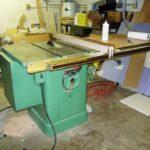 A table saw is a fundamental tool for any woodworking shop. It’s used to make precise and straight cuts in wood, which are essential for many projects. The table saw consists of a circular blade that protrudes through the surface of a flat table, allowing you to guide the wood across it for accurate cuts.
A table saw is a fundamental tool for any woodworking shop. It’s used to make precise and straight cuts in wood, which are essential for many projects. The table saw consists of a circular blade that protrudes through the surface of a flat table, allowing you to guide the wood across it for accurate cuts.
This versatile tool can be adjusted to create different cutting depths and angles, making it an indispensable part of any woodworking toolkit. It’s crucial to follow safety measures when using a table saw, such as wearing protective goggles and keeping the work area clear of debris.
By understanding how to use and maintain this vital tool, beginners can kickstart their woodworking journey by acquiring foundational skills while ensuring safety during operations within their workshop.
Bandsaw
A  is a vital tool for any woodworking shop, especially when it comes to cutting irregular shapes or intricate designs on wood. It’s versatile and can be used for both straight and curved cuts, making it an essential addition to your collection of woodworking tools.
is a vital tool for any woodworking shop, especially when it comes to cutting irregular shapes or intricate designs on wood. It’s versatile and can be used for both straight and curved cuts, making it an essential addition to your collection of woodworking tools.
A quality bandsaw allows you to make precise cuts and resaw large pieces of wood into thinner boards, expanding the possibilities for your woodworking projects. By incorporating a bandsaw into your workshop, you can confidently enhance your woodworking skills and tackle a wider range of projects.
Understanding the importance of a bandsaw in woodworking is crucial for anyone starting their woodworking journey. The ability to create detailed cuts efficiently will significantly impact the quality and creativity of your work, allowing you to bring unique designs to life while building foundational skills essential for any woodworker.
Orbital sander
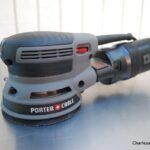 When it comes to equipping your woodworking shop, an orbital sander is a crucial tool for achieving smooth and polished surfaces. This versatile tool is perfect for sanding large, flat areas as well as curved edges.
When it comes to equipping your woodworking shop, an orbital sander is a crucial tool for achieving smooth and polished surfaces. This versatile tool is perfect for sanding large, flat areas as well as curved edges.
An orbital sander is essential for preparing wood before applying finishes or when smoothing out rough patches on your woodworking projects.
The orbital sander’s ability to create a fine, swirl-free finish makes it indispensable in any woodworking shop. Its lightweight design and ease of use make it an ideal tool for beginners starting their woodworking journey.
Jointer
A jointer is a woodworking tool that flattens the face of a board and creates a straight edge along one side. Ensuring that your wood pieces are flat, smooth, and straight is crucial for creating high-quality woodworking projects is essential.
The jointer works by using rotating blades to shave off thin layers of wood, gradually flattening the surface. This process helps in removing any twists or warps from the board and makes it easier to work with when using other tools like the table saw or planer.
Additionally, utilizing a jointer can help woodworkers achieve precise right angles necessary for crafting furniture and other woodworking items.
Planer
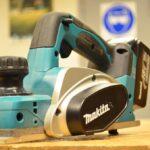 A planer is an essential tool for smoothing and leveling the surface of lumber. It helps in creating uniform thickness on both sides of a board, making it easier to work with. Planers are used to reduce the thickness of rough lumber, resulting in flat surfaces ready for further woodworking.
A planer is an essential tool for smoothing and leveling the surface of lumber. It helps in creating uniform thickness on both sides of a board, making it easier to work with. Planers are used to reduce the thickness of rough lumber, resulting in flat surfaces ready for further woodworking.
By using a planer, woodworkers can achieve precise measurements and consistent thickness across multiple pieces of wood, ensuring professional-looking results.
Woodworkers often use planers in conjunction with jointers to create perfectly smooth and square edges while also ensuring that boards have uniform thickness throughout their length.
Dust collector
After considering the essential woodworking tools to start with, it’s crucial to equip your woodworking shop with a dust collector. A dust collector helps maintain a clean and healthy working environment by effectively capturing wood dust and debris generated during woodworking activities.
It ensures that the air in the workshop remains free from harmful particles, promoting better respiratory health for woodworkers.
Selecting an appropriate dust collector based on the size of your workspace and the type of woodworking activities you’ll be undertaking is essential. Understanding how to properly set up and maintain a dust collection system is vital for its optimal performance.
Miter saw
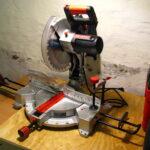 The miter saw is a crucial tool for woodworking, allowing precise and angled cuts to be made in wood. It is especially useful for cutting moldings and frames. Its ability to pivot the blade for angled cuts makes it essential to create accurate joints and corners in woodworking projects.
The miter saw is a crucial tool for woodworking, allowing precise and angled cuts to be made in wood. It is especially useful for cutting moldings and frames. Its ability to pivot the blade for angled cuts makes it essential to create accurate joints and corners in woodworking projects.
The miter saw can also be used to make straight crosscuts, making it versatile for various tasks within a woodworking shop. Its efficiency and precision make it an indispensable addition to any woodworker’s tool collection.
Woodworking projects often require the use of a miter saw due to its ability to make quick and accurate cuts at different angles. This makes it an essential tool for both beginners learning basic woodworking techniques and experienced woodworkers striving for precision in their craft.
Router
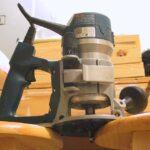 The router is a versatile woodworking tool used for hollowing out an area in a piece of wood. It can also be used for shaping edges and creating joinery, adding versatility to your woodworking projects.
The router is a versatile woodworking tool used for hollowing out an area in a piece of wood. It can also be used for shaping edges and creating joinery, adding versatility to your woodworking projects.
With the right bits, it can create intricate designs and profiles on the wood surface, making it an essential tool in any woodworking shop. Additionally, routers come in both handheld and table-mounted versions, allowing for flexibility and precision in various woodworking tasks.
When working with a router, always ensure to use proper safety equipment such as goggles and ear protection due to its noise level and potential flying debris. Moreover, mastering techniques such as plunge routing or edge profiling can add professional finesse to your woodworking projects while significantly expanding your skill set.
Circular saw
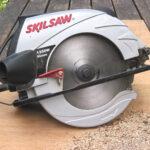 A circular saw is crucial for making straight cuts in wood, plywood, and other materials. Its versatility and portability make it a must-have for any woodworking shop. The circular saw’s adjustable cutting depth allows for different material thicknesses to be easily cut.
A circular saw is crucial for making straight cuts in wood, plywood, and other materials. Its versatility and portability make it a must-have for any woodworking shop. The circular saw’s adjustable cutting depth allows for different material thicknesses to be easily cut.
This tool is essential for cross-cutting and ripping sheets of plywood or making long, straight cuts in lumber. With the right blade, it can even cut through metal and concrete, adding to its functionality as a versatile cutting tool.
It’s worth noting that safety measures should always be observed when using a circular saw. Eye protection and hearing protection are essential due to the noise and flying debris generated during operation.
Chisels
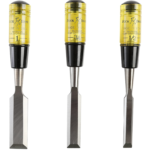
Chisels are essential woodworking tools used for carving and shaping wood. They come in various sizes and shapes, each serving a different purpose. For example, beveled edge chisels are ideal for making precise cuts and smoothing surfaces while mortise chisels are designed for creating joints.
To use a chisel effectively, it’s important to keep it sharp using sharpening stones or honing guides. Understanding the proper technique of using chisels is crucial to ensure safety and precision in woodworking projects.
Understanding the role of different types of chisels and mastering their usage is fundamental for any woodworker starting their journey. Whether it’s creating intricate designs or fine-tuning joints, having a good set of chisels is indispensable in any woodworking shop.
Clamps
Clamps are a must-have tool for any woodworker. The saying is that you can never have enough clamps. They’re essential for a wide variety of projects and tasks, from securing project parts to the bench to holding them in place while the glue dries to securing assemblies during a dry-fit.
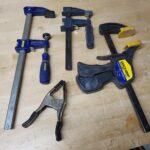 Depending on your work style, you may need to build up a collection of different clamps. That’s why it’s a good idea to start with a few small, medium, and large clamps and add them to your collection over time.
Depending on your work style, you may need to build up a collection of different clamps. That’s why it’s a good idea to start with a few small, medium, and large clamps and add them to your collection over time.
As a beginner woodworker, you’ll be able to save money buying clamps by building a small stockpile of the types and sizes you’ll use most often. Once you have a few favorites, you can easily expand your selections as your shop grows and you begin working on more projects.
How to choose the best woodworking tools for your budget requires some planning and a little footwork.
Safety Gear
Woodworking is a hobby that can be fun and rewarding, but it can also be dangerous. Fortunately, it is not impossible for a beginner woodworker to equip their small shop with safety gear that will keep them safe from injury.
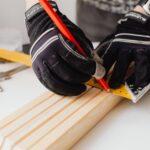 It’s important to know what type of safety equipment is necessary to protect yourself in the woodworking shop and which ones are unnecessary. Ventilation and lighting are always a priority, and these considerations must be built into your workshop’s earliest plans and layouts.
It’s important to know what type of safety equipment is necessary to protect yourself in the woodworking shop and which ones are unnecessary. Ventilation and lighting are always a priority, and these considerations must be built into your workshop’s earliest plans and layouts.
Getting cut-resistant gloves is another essential piece of safety gear for woodworkers as these will help you avoid cuts and splinters that may result from a woodworking project.
In addition to wearing cut-resistant gloves, you should invest in safety goggles, as wood particles can fly through the air and cause discomfort and itchiness. It is best to choose wrap-around style safety goggles rather than prescription glasses because these are not made to resist damage.
How to Maintain and Upgrade Your Woodworking Tools and Shop
Invest in quality tools that will last and consider multi-functional options to save space and money. Read on for more expert tips on setting up your woodworking shop!
Invest in quality tools
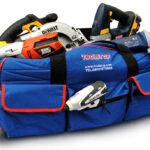 Quality tools are crucial for woodworking projects. They provide precision and durability, ensuring smoother and more accurate cuts and finishes. High-quality tools also offer better safety features, reducing the risk of accidents in the workshop.
Quality tools are crucial for woodworking projects. They provide precision and durability, ensuring smoother and more accurate cuts and finishes. High-quality tools also offer better safety features, reducing the risk of accidents in the workshop.
Additionally, they tend to have longer lifespans, making them a worthwhile investment in the long run.
When setting up your woodworking shop, prioritize quality tools such as table saws, routers, and chisels to ensure top-notch craftsmanship. These tools will enhance your woodworking experience and contribute to your projects’ success over time.
Consider multi-functional tools
Multi-functional tools can save space and money in a woodworking shop. A single tool that can perform multiple functions, such as a combination table saw and router, is efficient. This helps beginners with limited space and budgets to still have essential equipment for various woodworking tasks.
Investing in multi-functional tools offers versatility and flexibility for different woodworking projects. Multi-purpose tools like a planer/thicknesser or sander/polisher save space and simplify the learning process for beginners getting into woodworking.
These types of tools cater to diverse needs while streamlining the workshop layout.
Utilize vertical and wall space for storage
Consider multi-functional tools to maximize efficiency and then utilize vertical and wall space for storage. Accessory worksurfaces can help maximize shop traffic patterns in a woodworking shop, while compact tool storage techniques are essential for setting up a woodworking shop in a small space.
Utilizing various levels for storage can create designated areas for specific tasks and offer efficient workshop organization. Therefore, beginners can learn woodworking fundamentals and understand the tools needed to become a woodworker by considering these tips while equipping their woodworking shop like an expert from the start.
Create designated areas for specific tasks
After utilizing vertical and wall space for storage, the next step to equip a woodworking shop like an expert is to create designated areas for specific tasks. This organization can streamline your workflow and increase efficiency.
For example, designate one area for cutting, another for assembly, and another for finishing. By having specialized areas, you can keep tools and supplies organized and easily accessible as you move through different stages of your woodworking projects.
This kind of organization will help you work more smoothly in your woodworking shop.
Consider a consultation for personalized help
If you feel overwhelmed setting up your woodworking shop, a consultation can provide personalized guidance. Expert advice lets you determine the best layout and equipment for your space and projects.
A woodworking consultant can help you make informed decisions on essential tools, maximizing efficiency, and optimizing your workshop for success. This tailored approach ensures that you start your woodworking journey on the right foot with the necessary knowledge and resources. We recommend Ralph Chapman’s Ultimate Small Shop Guide, which advises you on every single aspect of setting up a woodworking shop in a small space.
Maximizing Space and Efficiency
Utilize vertical and wall space for storage, compact tool storage techniques, and consider various levels for storage to make the most of your woodworking shop. Ready to optimize your woodworking space? Keep reading for more tips on equipping your shop like an expert!
Storage solutions
Maximize your woodworking shop space with these efficient storage solutions:
- Install wall-mounted shelves to keep small hand tools and supplies organized and easily accessible.
- Utilize rolling tool carts or cabinets to store frequently used power tools, allowing for easy mobility when needed.
- Consider modular storage systems that can be customized to fit the specific dimensions of your shop and accommodate various tool sizes.
- Use stackable bins or drawers for sorting and storing hardware, such as screws, nails, and other small components.
- Implement overhead racks or pulley systems to take advantage of vertical space for storing lumber, pipes, or long pieces of wood.
- Create a dedicated area for lumber storage using sturdy racks or vertical stands to keep materials neatly arranged and easily visible.
Compact tool storage techniques
Maximize space efficiency by using compact tool storage techniques in your woodworking shop.
- Utilize pegboards to hang frequently used hand tools such as chisels, screwdrivers, and hammers.
- Install magnetic strips on the wall to hold metal tools like wrenches and pliers within easy reach.
- Use stackable plastic bins or drawers for organizing smaller items such as screws, nails, and other hardware.
- Consider overhead storage racks for less frequently used tools or large items like clamps and hand saws.
- Utilize rolling tool chests or cabinets with multiple drawers to keep power tools neatly stored and easily accessible.
- Make use of portable tool organizers for transporting small hand tools to different work areas within the shop.
- Create custom shelving units to fit into tight spaces for storing materials, finishes, and accessories.
DIY Workbench Plans Free for Your Dream Workspace (wherecanibuythat.us)
Utilizing various levels for storage
To make the most of your woodworking shop space, consider utilizing various levels for storage. This will help optimize the use of vertical space and keep the shop organized and efficient. Here are some ways to achieve this:
- Overhead shelving: Install sturdy overhead shelves to store items that are not frequently used but still need to be easily accessible.
- Wall-mounted cabinets: Utilize wall space by installing cabinets or shelves to hold smaller tools, supplies, and accessories.
- Pegboards and tool racks: Hang frequently used hand tools on pegboards or tool racks mounted on the walls to keep them within reach yet off the work surfaces.
- Rolling carts and mobile storage units: Invest in rolling carts or mobile storage units that can be moved around as needed, providing flexibility in organizing and accessing tools and materials.
- Under-bench storage: Maximize space under workbenches by incorporating drawers, shelves, or pull-out bins for storing smaller tools and supplies.
Conclusion
In conclusion, setting up a woodworking shop requires careful planning and the right tools. The strategies and tips discussed are practical and easy to implement for beginners. By understanding the importance of efficient layout and tool selection, woodworkers can achieve significant improvements in their projects.
Consider exploring additional resources or seeking personalized guidance for further learning. Remember that dedication to learning basic techniques is crucial, paving the way for mastering advanced woodworking skills with time and practice.
FAQs
1. What do I need to start a woodworking shop?
To start a woodworking shop, you’ll need essential equipment like a tablesaw, drill press, and woodworking supplies such as materials and tools for your projects.
2. Can I learn how to set up my woodshop by watching tutorials?
Yes! Woodworking tutorials are great for beginners to learn how to set up their woodshop and use different types of woodworking machinery safely and correctly.
3. Should I plan my workshop setup before starting my woodworking hobby?
Absolutely! Planning your workshop setup early will help you know what woodshop equipment you need and organize your space well, especially if you want to turn it into a business later.
4. What should I consider when buying equipment for my carpenter’s workshop?
When buying equipment for your carpenter’s workshop, think about the kind of DIY carpentry or professional jobs you’ll do. Choose machines that fit within your budget while meeting your project needs.
5. How can setting up a good woodworking business help me in the future?
Setting up a good woodworking business planning from the start can save you time and money in the long run by helping you buy only necessary supplies and avoid costly mistakes as you grow in expertise.


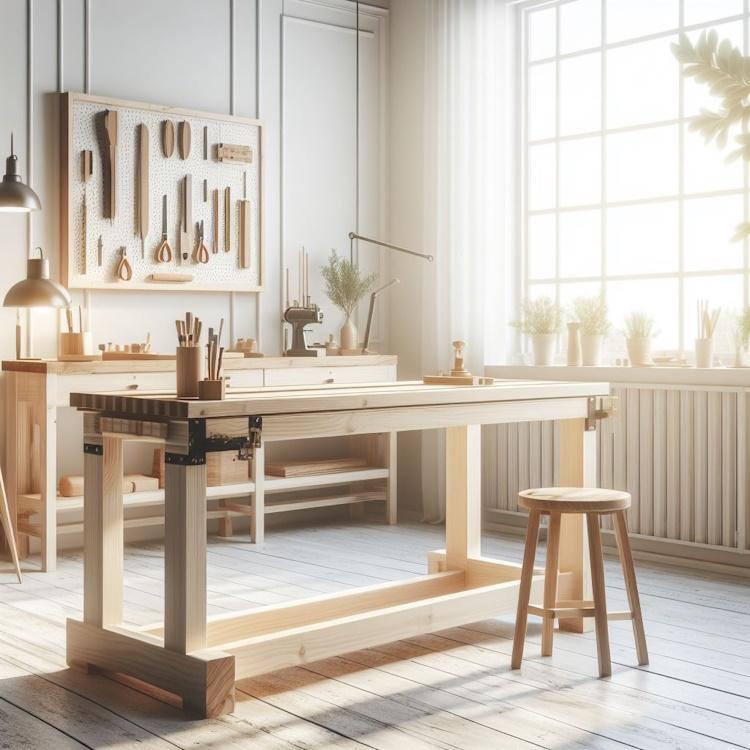
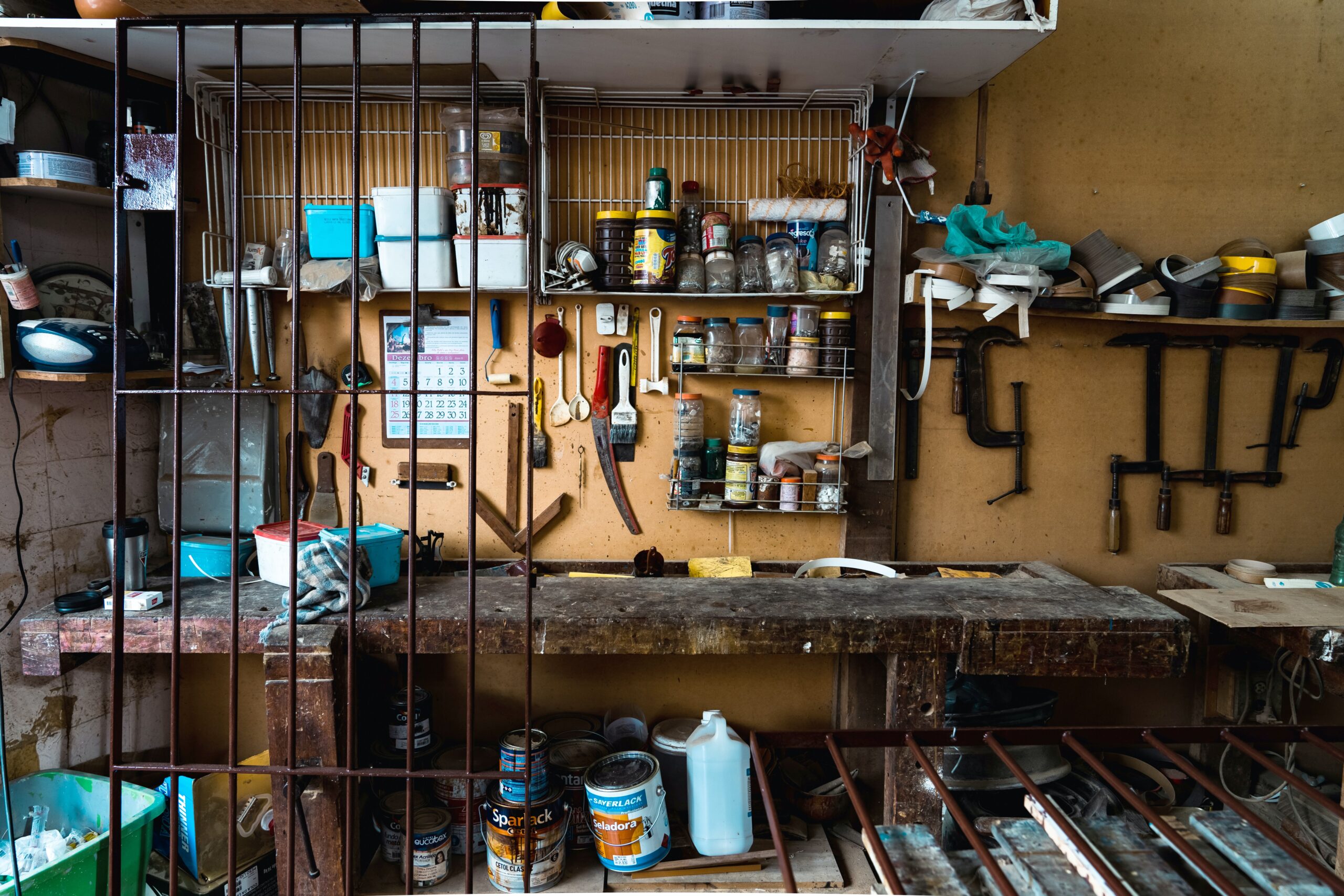

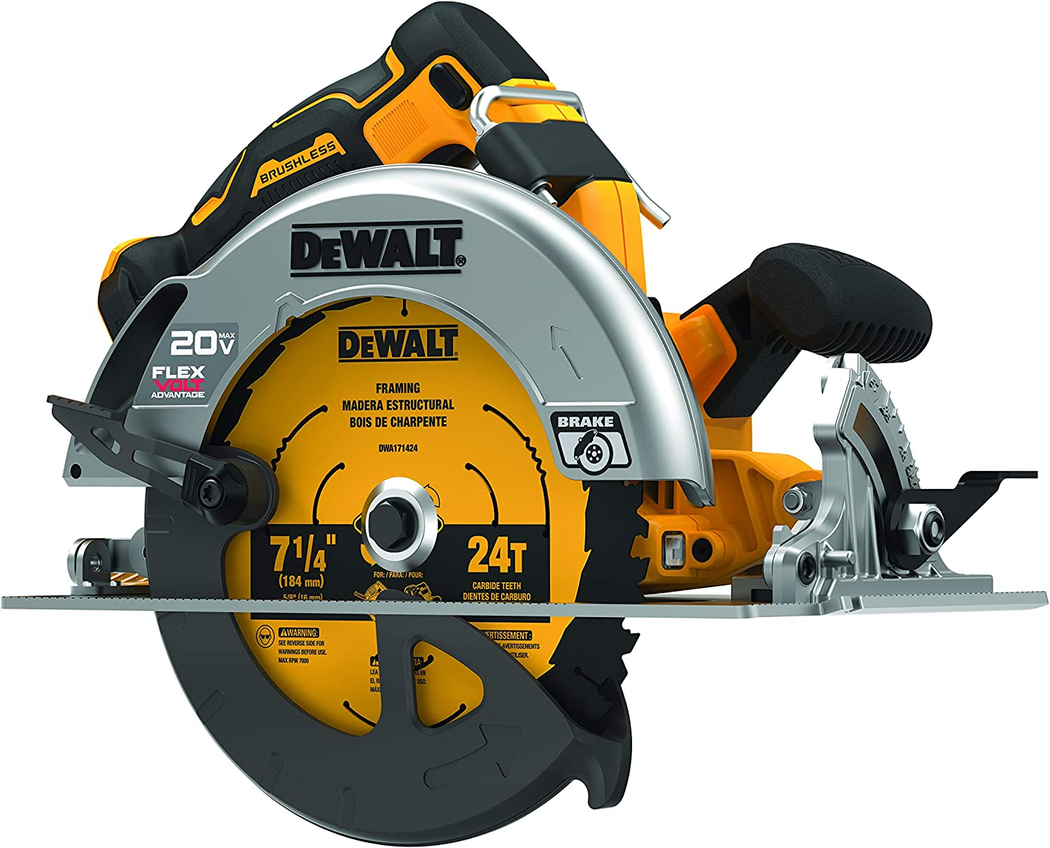
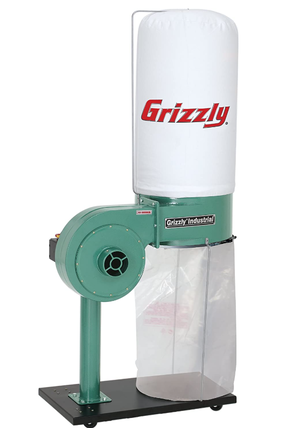


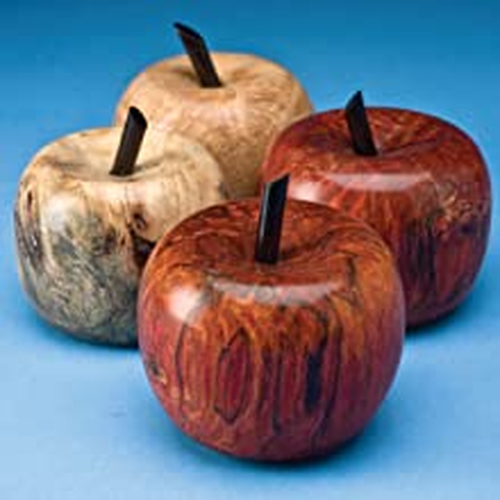
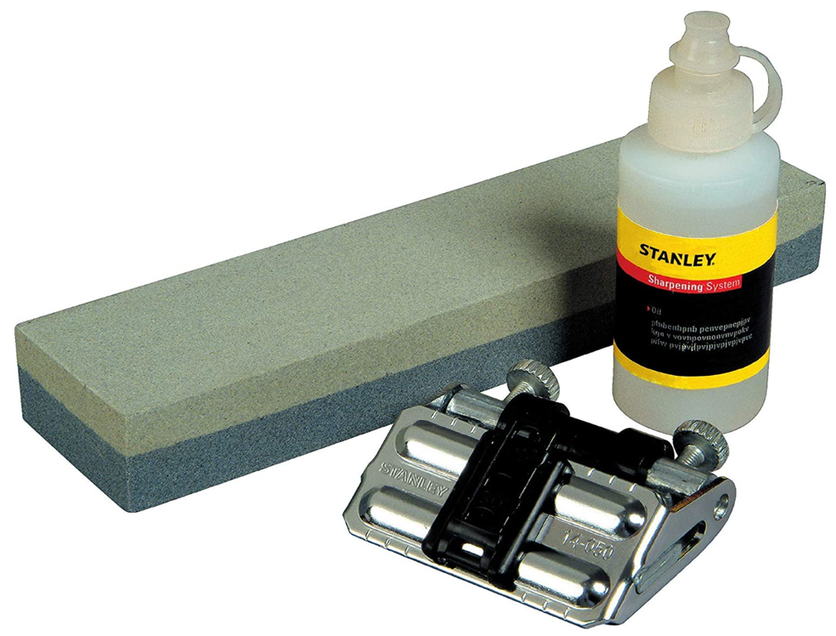
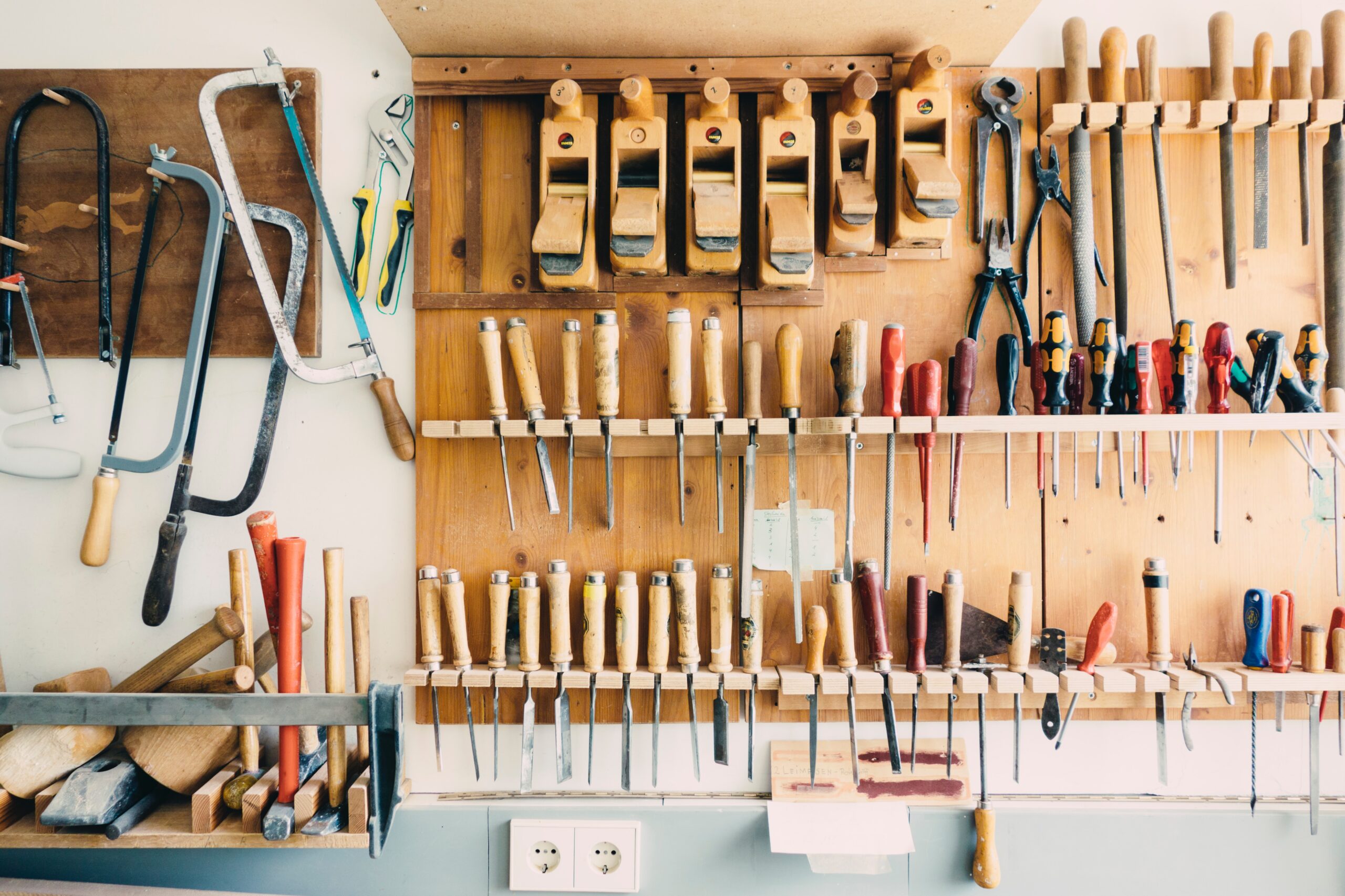
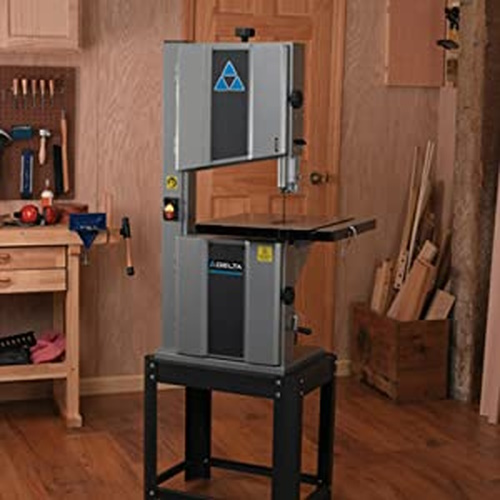
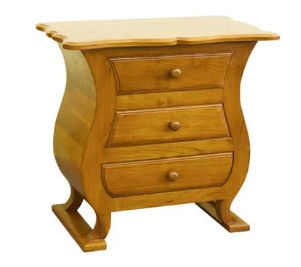
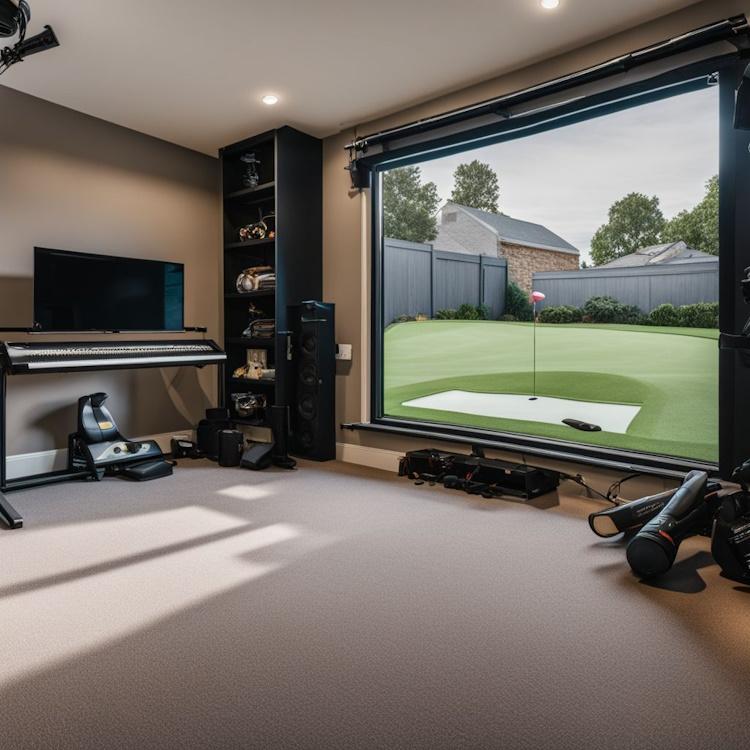
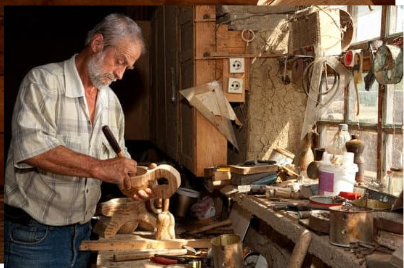
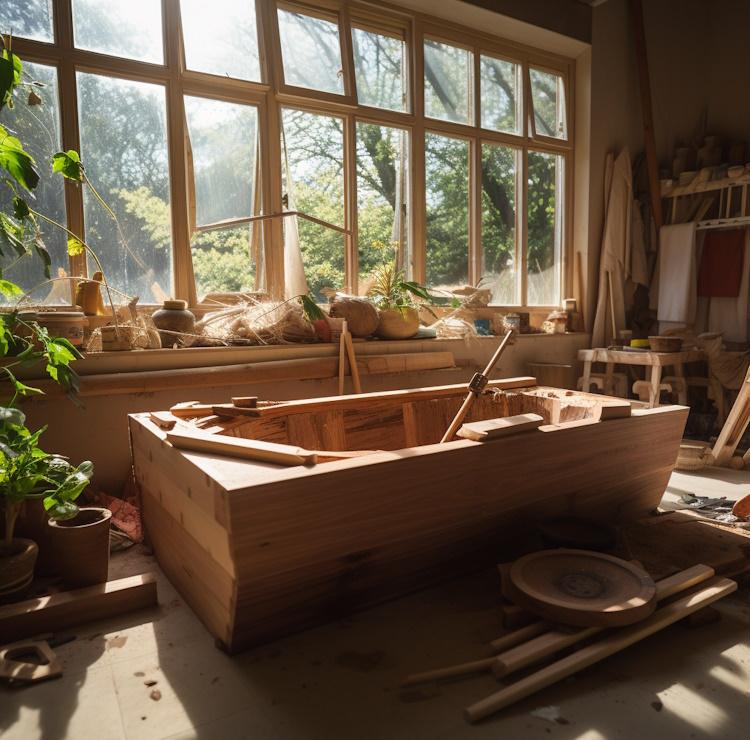

One Comment